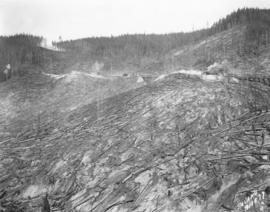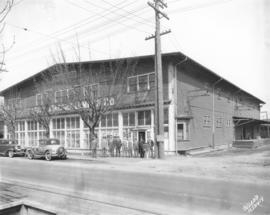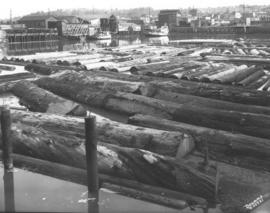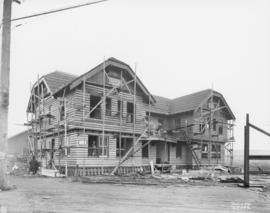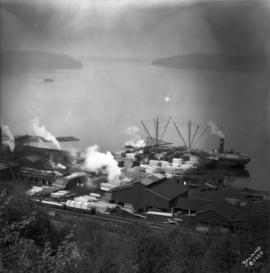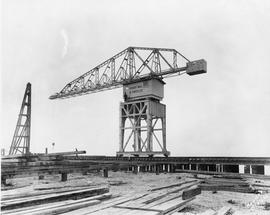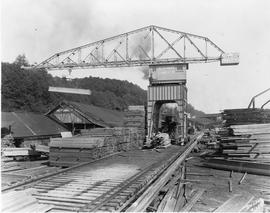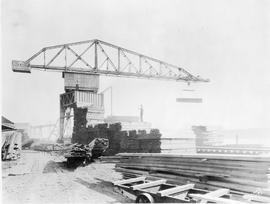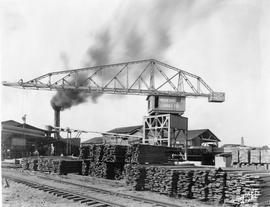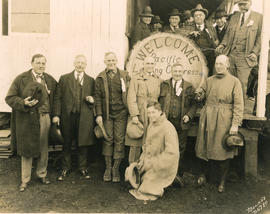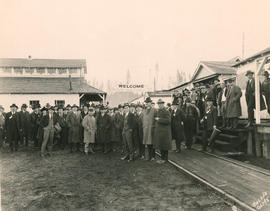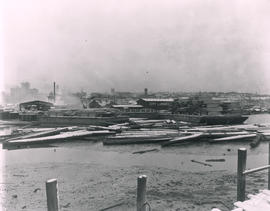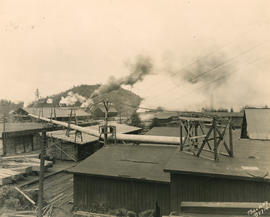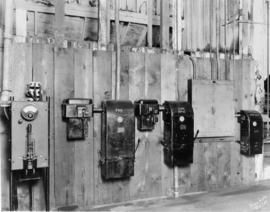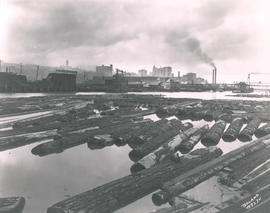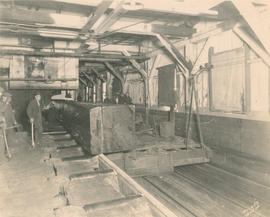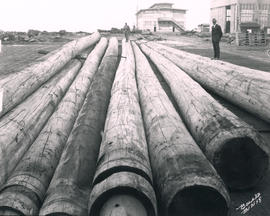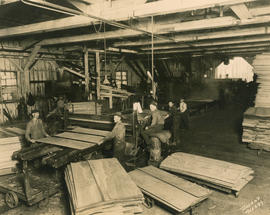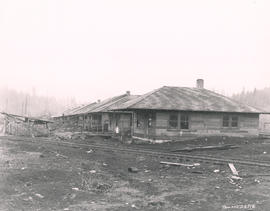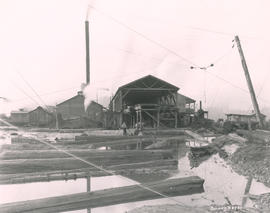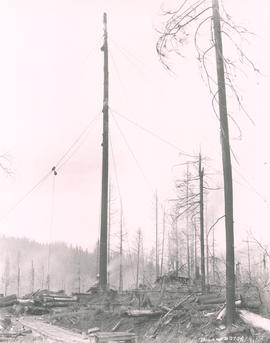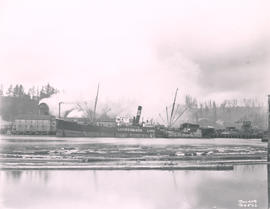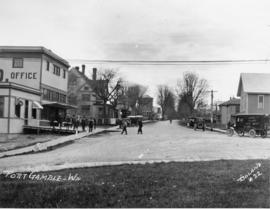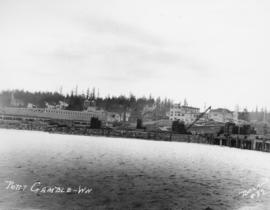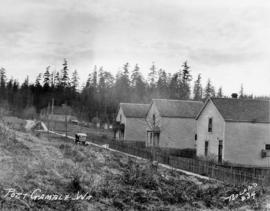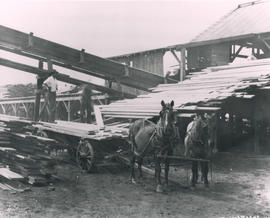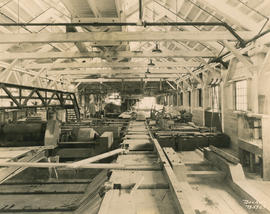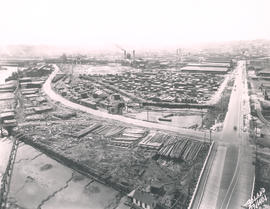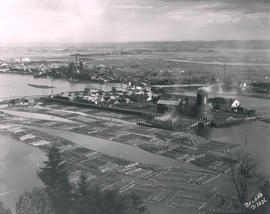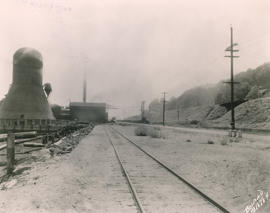Interior of power house at the Vance Lumber Co. plant in Malone, Washington. Photographed on October 8, 1923 as part of a series of photographs taken by Marvin Boland. Joseph Alexander Vance was in 1923 the president and sole owner of the Vance Lumber Co. who made the small town of Malone a company town for his employees. A native of Quebec, Canada, Mr. Vance arrived in Washington in 1890 and after several jobs, became involved in the lumber industry where in 1897 he founded a small mill near Elma. This venture would be the beginning of the Vance Lumber Co. In 1909 he purchased the Swan & Johnson holdings at Malone, five miles east of Elma, which consisted of a mill, timber and a 300-hundred acre farm. He then erected a hotel, homes for his workers, a store, a school and office buildings to improve Malone. Besides cutting lumber the company also manufactured shingles and erected a planing mill and factory. Mr. Vance's ill health forced him to dispose of his lumber interests in 1923 and he left the area for Seattle where he invested in commercial real estate. The mills in Malone closed during the Depression and the company owned homes were sold. G36.1-027 (Pollard: A History of the State of Washington, p. 177-178; Hunt: Washington, West of the Cascades, p. 636-639)
Malone-Vance Lumber Co. (Malone); Power plants--Malone; Lumber industry--Malone; Mills--Malone;
